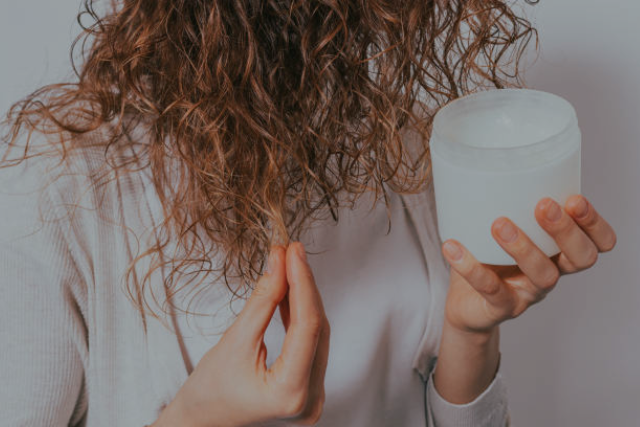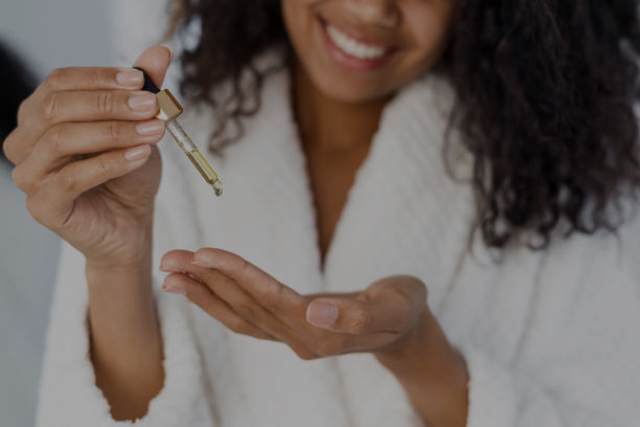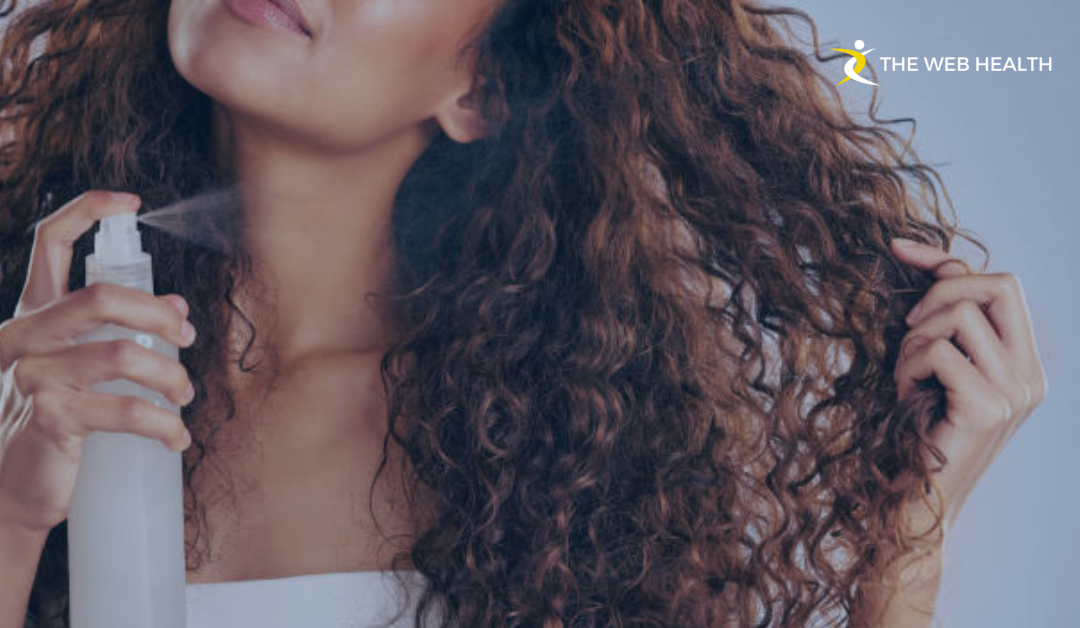Did you know that about 90% of your hair is made of proteins? These proteins are found in many hair care products. But, these products can harm curly hair by taking away its natural oils and moisture. In this guide, we’ll show you how to make your curly hair go from frizzy to fabulous.
Understanding Your Curly Hair Type and Texture
Exploring curly hair care can be a journey of self-discovery. Curly hair ranges from loose waves to tight coils. Knowing your curl type is key to healthy, vibrant curls. Let’s explore the different curl patterns and how to find your unique hair type.
Okay, so curl patterns are basically divided into three main groups: wavy, curly, and coily. Each has its own unique vibes. Here’s the breakdown:
Type 2 – Wavy
Wavy hair has a natural “S” shape. Wavy hair strikes a balance between straight and curly textures.
-
2A: Loose, tousled waves that are light and easy to manage.
-
2B: More defined, structured waves with a noticeable texture.
-
2C: Thick, voluminous waves that are prone to frizz.
Type 3 – Curly
Curly hair forms bouncy, well-defined spirals.
-
3A: Large, loose curls that are shiny and springy.
-
3B: Medium-sized ringlets with a tighter, more defined structure.
-
3C: Small, dense curls that pack a lot of volume.
Type 4 – Coily
Coily hair is tightly curled with a zig-zag or “Z” pattern.
-
4A: Soft, spring-like coils with a consistent pattern.
-
4B: Angular, “Z”-shaped strands with a less defined curl.
-
4C: Extremely tight coils that are densely packed, often with significant shrinkage.
How to Identify Your Specific Curl Type?
Finding your exact curl pattern is fun and informative. Look at the width and shape of your curls. Plus, the texture and density of your hair. The Andre Walker Hair Typing System is a good guide. It classifies hair from 1 (straight) to 4 (coily).
What are the Common Challenges of Each Curl Pattern?
Each curl type has its own challenges. Wavy hair may struggle with frizz and shape. Curly hair can be dry and tangled. Coily hair often has trouble keeping moisture and dealing with shrinkage. Knowing these challenges helps you create a hair care routine that meets your needs.
Embracing curly hair’s beauty is a journey of self-discovery. By understanding your curl type and texture, you can achieve healthy, vibrant curls.
What are Essential Curly Hair Care Products?
Choosing the right curly hair products is key to keeping your curls healthy and defined. You should always look for shampoos without sulfates and conditioners without silicones. These prevent moisture loss and product buildup. Also, curly hair care products should have natural oils and butters to keep your curls hydrated.
For styling, use leave-in conditioners, curl creams, and gels. They help define and hold your curls. Brands like DevaCurl and TRESemmé have lines made for curly hair. Moreover, stay away from harsh chemicals that can harm or dry out your curls.
Investing in the right curly hair care products can greatly improve your curls’ health and look. Try different formulas to find what works best for your curls.
“The best products for curly hair care are those that provide hydration and definition without weighing down the hair.”
How to Take Care of Curly Hair?
Getting healthy, vibrant curls is all about good hair care for curly hair. Our hair has two main parts: the shaft and the follicle. The follicle shape affects our hair texture, making curls more likely.
This shape also creates special bonds that make our hair strands stick together. This is what gives curls their beautiful shape. Here are some tips that can help you better understand curly hair care:
Natural Oils and Moisture Balance
Natural oils from our scalp keep our hair moist. But, curly hair often has trouble spreading these oils evenly. Finding the right moisture balance is key for curly hair health.
Using the right curly hair care for curly hair helps keep this balance. It prevents dryness, brittleness, and frizz.
Protein-Moisture Relationship
Knowing how protein and moisture work together is important for curly hair care. Some hair types need protein treatments to strengthen. But too much protein can make hair brittle and breakable.
Finding the right balance for curly hair care is crucial. It keeps your curls healthy and strong.
Understanding Product Ingredients
Ingredients like humectants, emollients and proteins are vital for curly hair care. Avoiding sulfates and non-water-soluble silicones also helps keep curls intact.
By understanding curly hair care science, you can make your curls look their best.
Proper Washing Techniques for Curly Hair Care
Keeping your curly hair healthy and vibrant starts with the right washing techniques. It’s best to wash curly hair once or twice a week. This helps keep the natural oils that make your curls look good.
When washing your curls, use lukewarm water to keep moisture in. Clean the scalp gently to help make more natural oils. Let the water flow down your hair to reduce tangles and frizz.
-
Use a low-lather, sulfate-free shampoo to clean the scalp without drying out the hair.
-
Apply conditioner only to the mid-lengths and ends. Always avoid the roots.
-
Consider nourishing your hair with hair oil before washing it.
-
Use a microfiber towel or an old t-shirt to gently squeeze out excess water. It’s better than rubbing the hair vigorously.
Healthy curly hair care techniques come from finding the right balance in washing. By following these tips, you’ll get the beautiful, defined curls you’ve always wanted.
“Proper hair washing is essential for keeping curly hair care. Avoid over-washing, and focus on gentle, moisture-preserving techniques.”
What is The Co-Washing Method for Curly Hair Care?
This washing method has been proven beneficial for curly hair care. It uses conditioner rather than shampoo for washing hair. It’s suitable for dry, curly, or coily hair types as it retains natural oils, as well as moisture.
Benefits of Co-Washing for Curly Hair Care
It also prevents hair loss and makes the hair softer and more hydrated. Plus, it helps achieve better curls and minimizes fuzz. This is because it does not use harmful elements found in shampoos. Therefore, it prevents the hair from getting either too straight, too curly, or frizzy.
Step-by-Step Co-Washing Guide
-
Preferably warm water should be used and make sure the hair is wet, not damp.
-
Put your chosen co-wash conditioner on your scalp.
-
Work the conditioner into your hair and scalp with the tips of your fingers applying it to your hair from the roots to the tips.
-
Wash the co-wash conditioner off well to keep your hair and scalp free from deposits.
When to Co-wash versus the Regular Washing
Co-washing does work for curly hair, but it is not the only way. You can use a sulfate-free shampoo once a week or twice in 7-10 days. This helps to reduce the buildup and other things that co-washing is likely to leave behind. If your scalp is oily, you should use shampoo since it would be more effective.
Experiment and switch up the techniques to reach for the best outcome for curly hair care.
Deep Conditioning and Moisture Treatments for Curly Hair Care
Keeping your curls healthy and moisturized begins with a good deep conditioning routine. Add a top-notch deep conditioner or hair mask to your weekly curly hair care. Also, choose products with shea butter, coconut oil, or keratin to meet your curls’ needs.
Apply the deep conditioner to damp hair, focusing on the ends. These are usually the driest. Leave it on for 15-30 minutes. Then, rinse with cool water to close the cuticle. For better results, use a shower cap or warm towel while waiting.

“Deep conditioning is particularly important for curly hair, especially heat, and chemically-damaged hair.”
Styling Methods for Curly Hair Care
Many people with curly or wavy hair dream of having defined, frizz-free curls. Luckily, there are several styling techniques to help achieve this look. Let’s explore some of the most effective methods for styling curly hair.
Plopping Technique
The plopping technique is a great choice for curly-haired individuals. Wrapping damp hair in a t-shirt or microfiber towel encourages curl formation and reduces frizz. This simple method locks in moisture, allowing curls to air-dry naturally.
Scrunching Methods
Scrunching is another essential technique for defining curls. By gently squeezing and lifting hair upwards, you can create beautifully defined curls with volume. This process activates the curl pattern and minimizes frizz.
Product Application Tips:
Proper product application is key to achieving perfect curl definition. Use the “prayer hands” method to evenly distribute leave-in conditioners, curl creams, and styling gels. Start with a leave-in conditioner to nourish and hydrate. Then apply a curl-enhancing product to lock in moisture and define curls.
Experiment with different techniques and products to find the perfect routine for your unique curl pattern. With practice and patience, you’ll achieve effortlessly styled, defined curls that will be the envy of all.
“Plopping and scrunching are game-changing techniques for enhancing curl definition and reducing frizz.”
How to Protect Your Curls While Sleeping?
Keeping your curly hair healthy and looking good needs extra care, especially at night. The right nighttime routine can help keep curls defined and reduce frizz. Here are some key tips to protect your curls while you sleep:
Using a silk or satin pillowcase is a smart move. These materials are softer on hair, reducing damage and frizz. Silk pillowcases help keep your curls in shape and prevent breakage.
Wrapping your hair in a silk or satin scarf or bonnet is also a good idea. It keeps your curls safe and their shape intact all night. For longer hair, try the “pineapple” method, gathering hair at the crown.
-
Avoid using tight hair ties or scrunchies that can cause breakage.
-
Refresh your curls in the morning with a light water spray and a small amount of styling product, if needed.
Sticking to a nighttime routine can greatly improve our curls’ health and look. By adding these simple steps to your bedtime routine, you can wake up with beautiful, defined curls. This way, you can start the day feeling confident.
“Protecting your curls while you sleep is essential for maintaining their health and definition. A silk pillowcase or bonnet can make all the difference in preserving your beautiful curls.”
Heat Styling and Damage Prevention for Curly Hair Care
Heat styling can make hair look polished. But, it can also harm delicate curly hair. Too much heat can dry out, break, and lose curl definition. Yet, with the right steps, you can enjoy heat styling without harming your hair.
-
Heat Protection Methods
Using a heat protection product is key to safe styling. These sprays, serums, or creams act as a shield against hot tools. Look for ones with silicones, proteins, or natural oils to keep moisture in and prevent breakage.
-
Alternative Styling Techniques
For curls without heat damage, try heat-free styling. Methods like twist-outs, braid-outs, and bantu knots are great. Air-drying or using a diffuser on low heat also works well.
If you must use heat, set tools to the lowest temperature. Limit use to special times. Always follow up with deep conditioning to keep your hair healthy and strong.
“Protecting your curls from heat damage is essential to maintaining their bounce, shine, and definition. With the right precautions and alternative styling methods, you can achieve the look you love without sacrificing the long-term health of your hair.”
Seasonal Tips for Curly Hair Care
Curly hair needs special care all year. In winter, the focus is on keeping it moist. This helps fight off dryness from cold air and heaters. Also, you use richer products and do deep conditioning often.
Using a humidifier can help a lot. It adds moisture back into the air. This helps prevent frizz and keeps curls bouncy.
In summer, we protect our curls from the sun. For that, people use UV-protective products or wear hats outside. Also, rinse hair well after swimming to avoid dryness.
Our hair care changes with the seasons. In humid weather, you use lighter products. In dry weather, we use richer ones. This helps care for your curls better.
Knowing how the seasons affect your hair is key. This way, you can keep your curls healthy and vibrant all year. With a bit of seasonal knowledge, you can enjoy your curls no matter the weather.

“The secret to great curly hair is not a secret at all. It’s about understanding your hair’s unique needs and caring for it accordingly, regardless of the season.”
Common Mistakes in Curly Hair Care
Keeping your curls healthy and defined means avoiding some common mistakes. One big mistake is using too much product, which can weigh your curls down. It’s best to wash your curly hair 2-3 times a week to keep natural oils. Also, use sulfate-free shampoos to avoid dryness and frizz.
Styling Errors to Avoid
Don’t brush your curly hair when it’s dry, as it can cause frizz and breakage. Detangle gently when your hair is wet and conditioned. Also, avoid rubbing your hair with a regular towel. Instead, use a microfiber towel or t-shirt to blot excess water and protect your curl pattern.
Maintenance Misconceptions
Many people wash their curls too much, stripping them of natural oils. It’s best to wash once or twice a week. Finding the right routine and products for your curls may take some time. Be patient and keep trying until you get the look you want.
| Mistakes | Solutions |
| Overusing products leads to a buildup | Use products sparingly and clarify regularly |
| Brushing dry, fragile curly hair | Detangle gently when hair is wet and conditioned |
| Rubbing hair with regular towels | Use a microfiber towel or t-shirt to blot excess water |
| Over-washing, stripping natural oils | Wash curly hair 1-2 times per week |
Last Words
Understanding your curly hair is key. We need to know our curl patterns, use the right products, and style wisely. Sticking to a hair care routine is crucial for healthy curls.
Every curl type is unique. What works for someone else might not work for someone else. So, be patient and try different things.
By taking the right steps, you can make your curls look amazing. This guide helps understand curls and care for them. You can get the curls you want with a little effort.
Love your curls and choose good curly hair care products. Focus on natural curly hair care for the best results. Soon, you’ll have curls that look great and feel amazing.
FAQs
What are the different curl patterns and characteristics?
Curly hair has many patterns and textures. You might have loose waves or tight coils. Curl types range from 2A-2C (wavy) to 4A-4C (coily). Each type has its own challenges. These include dryness, frizz, and keeping curls in shape.
How do I identify my specific curl type?
Knowing your curl type is key for good hair care. Look closely at your hair strands. See if they’re wavy, curly, or coily. Also, notice the pattern and texture of your hair.
What are the essential products for curly hair care?
The right products are vital for curly hair. Choose sulfate-free shampoos and silicone-free conditioners. Use styling products like leave-in conditioners, curl creams, and gels. These products should hydrate and define your curls. Stay away from harsh chemicals that can harm your curls.
How does the science behind curly hair care work?
Natural oils from your scalp keep your hair moist. But, curly hair often has trouble spreading these oils. It’s important to find the right balance between protein and moisture. Some hair types need protein treatments, while others might get too dry.
What are the proper washing techniques for curly hair?
Wash your hair once or twice a week to keep natural oils. Use lukewarm water and clean your scalp gently. This helps stimulate oil production. Rinse with water flowing down your hair to avoid tangling and frizz.
How does the co-washing method work for curly hair?
Co-washing means using conditioner instead of shampoo. It helps keep your hair moist and retains natural oils. This method is great for dry or damaged hair. It reduces frizz, boosts moisture, and makes curls look better.
Why is deep conditioning important for curly hair?
Deep conditioning keeps your curls healthy and moisturized. Use products with shea butter, coconut oil, or keratin once a week. This helps reduce frizz, adds shine, and improves curl health.
What are effective styling techniques for defined curls?
Try plopping, scrunching, and the “prayer hands” method for better curl definition. Apply products to wet hair, starting with a leave-in conditioner. Then, use a curl cream or gel to lock in moisture and enhance curl formation.
How can I protect my curls while sleeping?
Use a silk or satin pillowcase to protect your curls while sleeping. You can also wrap your hair in a silk or satin scarf or bonnet. Or try the “pineapple” method by gathering hair at the crown. This helps reduce friction and keeps your curls defined.
How should I adjust my curly hair care routine for different seasons?
In winter, use heavier products and deep conditions regularly to retain moisture. Use a humidifier to fight dry indoor air. In summer, protect your hair from the sun with UV-protective products or hats. Rinse after swimming to remove chlorine or salt water.
What are common mistakes to avoid in curly hair care?
Don’t overuse products, as they can weigh down your curls. Avoid brushing dry hair to prevent frizz and breakage. Instead, blot excess water with a microfiber towel or t-shirt. Also, avoid over-washing, which can strip your hair of natural oils.


